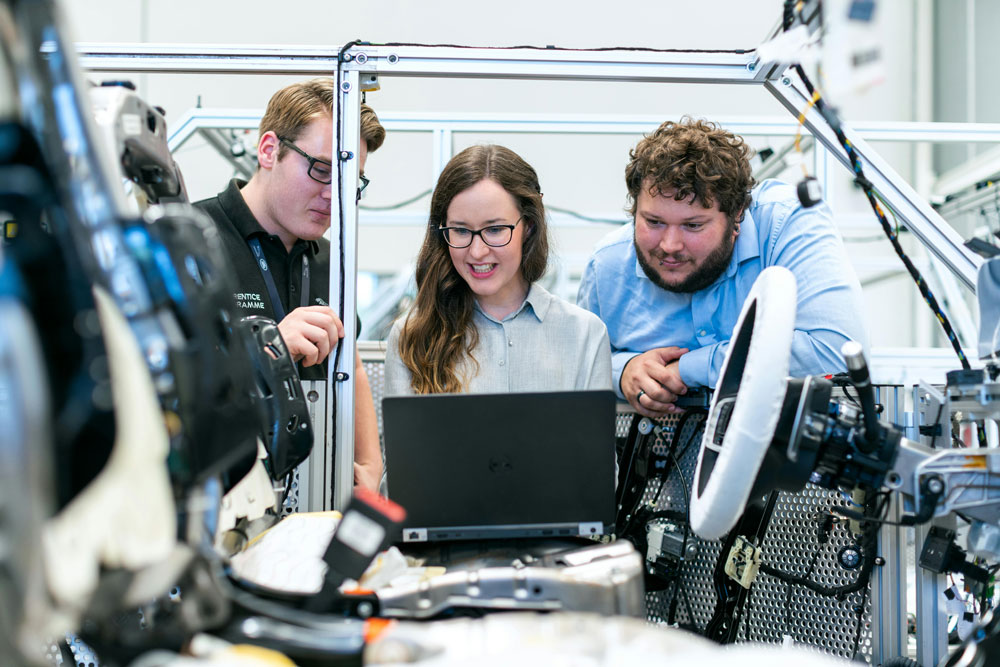Welcome to the world of manufacturing, where efficiency and effectiveness are crucial for success. In today’s industry, technology plays a significant role in streamlining processes and increasing productivity. However, with technological advancements come inevitable risks, including microchip failures in factories. These small but essential components can cause delays, malfunctions, and other issues that can significantly impact operations. But don’t worry, in this article we’ll discuss how to handle microchip failures in factories effectively. Let’s get to it!
Understanding Microchip Failures
It’s essential to understand what microchip failures are and their potential consequences. As the name suggests, a microchip failure occurs when one or more microchips within a device stop functioning correctly. These tiny chips are responsible for processing and storing data, controlling operations, and communicating with other components. If even just one microchip fails, it can disrupt the entire system and cause production delays or even shutdowns.
Microchip failures can happen due to various reasons, including design flaws, manufacturing defects, environmental factors, and aging. Therefore, it’s crucial to have a thorough understanding of your equipment’s microchips and their potential failure points.
When a microchip fails, it can be frustrating and stressful, especially if it occurs during critical production processes. However, it’s essential to remain patient and avoid rushing into quick fixes or replacements. Before taking any action, take some time to analyze the situation and gather information about the failure. This could include checking error logs, conducting tests, or consulting with experts. No matter what happens, be sure to avoid blaming individuals for the failure. Microchip failures can happen due to various reasons, and assigning blame will only create a negative work environment. Instead, focus on finding solutions and preventing future failures.
Implementing Preventative Measures
The best way to handle microchip failures in factories is to prevent them from happening in the first place. This can be achieved by implementing preventative maintenance measures, such as regular inspections and testing of microchips.
Regular inspections allow you to identify any potential issues early on and address them before they become major problems. Performing routine tests on microchips can help detect any anomalies or malfunctions and allow for timely replacements or repairs.
Another preventative measure is to ensure that the factory environment is suitable for microchip operation. Factors such as temperature, humidity, and electromagnetic interference can significantly impact the performance of microchips. No matter what you work on in your factory, it’s crucial to maintain optimal conditions for these components to function correctly.
Developing a Contingency Plan
Despite our best efforts, microchip failures can still occur. Therefore, it’s essential to have a contingency plan in place for such situations. This plan should outline the steps to take when a microchip failure happens and prioritize getting operations back up and running as soon as possible.
One crucial aspect of a contingency plan is having spare microchips readily available. These should be regularly updated and tested to ensure they are in working condition. Additionally, it’s essential to have a trained team of technicians who can quickly diagnose and replace faulty microchips.
To ensure that you have a steady supply of spare parts, it’s essential to work closely with reputable suppliers and manufacturers, such as Ultratech Saturn. These partners can provide you with high-quality replacement parts and also offer technical support in case of any issues. Developing strong relationships with these suppliers and manufacturers can also give you access to the latest advancements in microchip technology. This allows you to upgrade your equipment and prevent future failures.
Utilizing Technology for Monitoring
In today’s digital age, technology has made monitoring and tracking equipment performance easier than ever before. By utilizing sensors and software, you can gather real-time data on your factory’s microchip health and performance. This allows for early detection of any issues and can help you take preventative measures before a failure occurs. Some software programs can also predict when a microchip may fail, giving you ample time to plan for replacements or repairs. Investing in such technology can save both time and money in the long run.
Ensuring that your factory’s technology is well-maintained can go a long way in preventing microchip failures. This includes regularly updating software and firmware, cleaning and inspecting equipment, and providing proper training to employees on how to handle technology properly. By keeping your technology in top condition, you can prolong its lifespan and minimize the risk of failures.
Continuous Improvement
Finally, it’s essential to have a mindset of continuous improvement when it comes to handling microchip failures in factories. As technology evolves, so do the potential risks and ways to mitigate them. Regularly reviewing and updating your strategies, equipment, and processes can help you stay ahead of any potential problems.
Maintaining a motivated and engaged workforce is crucial for preventing microchip failures in factories. One way to achieve this is by fostering a culture of awareness and proactivity among employees. This can be done through regular training sessions on identifying potential issues, encouraging open communication about equipment performance, and recognizing employees who take initiative in addressing any concerns.
Providing incentives and rewards for meeting maintenance and safety goals can also help motivate employees to stay alert and proactive in preventing microchip failures. With a motivated team, you can ensure that everyone is working towards the common goal of minimizing disruptions caused by microchip failures.
While microchip failures in factories are inevitable, they don’t have to bring operations to a halt. By understanding the causes, implementing preventative measures, having a contingency plan, utilizing technology for monitoring, and continuously improving, you can effectively handle microchip failures and ensure smooth operations in your factory.











